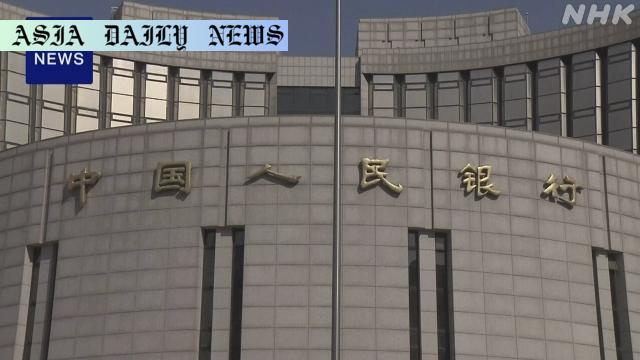interest rates – China’s central bank trims key interest rates for corporate and housing loans amid economic sluggishness.
China’s central bank lowers the 1-year and 5-year loan prime rates by 0.1%.
The move aims to revitalize a stagnant economy and bolster real estate.
First such rate cut since October last year, amid weak domestic demand.
Lingering concerns over trade tensions with the United States persist.

China’s Strategic Rate Cut to Address Economic Sluggishness
China has implemented a bold step in its monetary policy by reducing both corporate and housing loan interest rates for the first time since October of the previous year. This decision, taken by the People’s Bank of China (PBOC), is an attempt to rejuvenate a stagnating economy that has been heavily impacted by a prolonged real estate market slump and tepid domestic demand. In its latest announcement, the PBOC lowered the 1-year loan prime rate (LPR) by 0.1 percentage points to 3.0%, with the 5-year LPR also following suit with a reduction from 3.6% to 3.5%. The LPRs, often serving as benchmarks for commercial loans and mortgages, play a pivotal role in stimulating economic activity.
The ramifications of this adjustment are multifold. For one, commercial lenders now have access to a more competitive borrowing rate that should see more liquidity flowing into sectors previously constrained by high lending costs. Additionally, homebuyers struggling with affordability stand to benefit from the trimmed mortgage standards, theoretically reigniting interest and confidence in the real estate market—a sector that has long been a bellwether for wider economic growth in China.
Weak Domestic Demand and Trade Concerns
Despite these decisive measures, China’s existing economic challenges remain daunting. Domestic demand continues to lag behind expectations, with consumer spending not reaching levels that could meaningfully spur broader recovery. Additionally, the ongoing Sino–US trade war further complicates Beijing’s economic landscape. Uncertainty surrounding tariff negotiations has made international trade and investment less reliable as sources of growth, making central bank interventions all the more critical. China’s latest choice to trim its seven-day reverse repo rate further signifies its commitment to increasing short-term funding options for commercial lenders.
A Sign of Long-Term Monetary Commitment
These rate cuts, while inherently short-term fixes designed to inject liquidity and confidence into a lagging economy, may be indicative of broader, longer-term policy shifts. They highlight the central government’s willingness to experiment with monetary tools to navigate a challenging landscape of both domestic and international pressures. By making credit more accessible, particularly in the real estate sector, the rates are poised to bridge gaps in industrial production and employment, provided consumer confidence also improves. However, the effectiveness of these cuts relies heavily on non-economic factors, including geopolitical stability and market sentiment, both of which can heavily influence how these adjustments play out in the real world.



Commentary
China’s Interest Rate Cut: A Bold and Calculated Decision
The People’s Bank of China’s (PBOC) decision to lower both the 1-year and 5-year loan prime rates comes at a critical juncture. With global markets closely observing Beijing’s next moves, this adjustment sends a clear signal: China is ready to address its economic challenges head-on. As the world’s second-largest economy, China’s economic health has global implications, making these moves particularly noteworthy for policymakers and investors everywhere.
It’s commendable how the central bank recognizes the intertwined nature of housing and corporate financial health, two key levers of its complex macroeconomic system. The real estate sector, known as one of China’s primary growth engines, has faced persistent headwinds over recent years. From stalled construction projects to declining housing prices, the sector experienced a ripple effect that weakened both investor and consumer confidence. By cutting the 5-year benchmark LPR, the Chinese government demonstrates its acute awareness of how crucial this sector’s revival is for broader economic stability.
Anticipating Ripple Effects on Global Economies
On the other hand, the international dimension of China’s troubles—especially the protracted trade disputes with the U.S.—places the effectiveness of these measures under scrutiny. Lower interest rates alone cannot fully address the trade barriers, tariffs, and geopolitical tensions contributing to slowdowns in manufacturing and exports. However, these measures serve as an important foundation for resilience, potentially minimizing the harm caused by external shocks.
Ultimately, while this rate cut signals hope for domestic economic rebalancing, much remains to be seen in its impact. Whether these moves succeed in reigniting consumer confidence and spurring sustainable growth is a question that will unravel over the coming months. Until then, China’s proactive policy adjustments deserve attention as a model of handling diverse challenges in a globalized era.